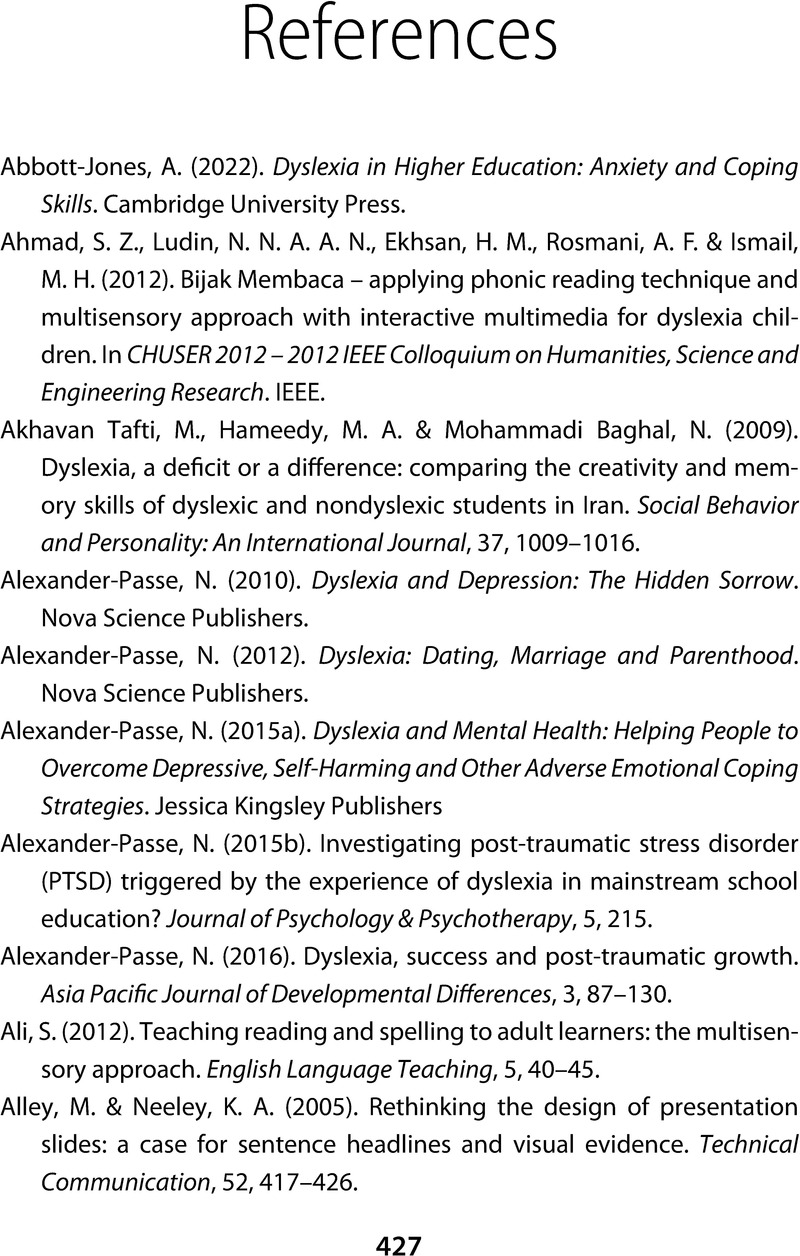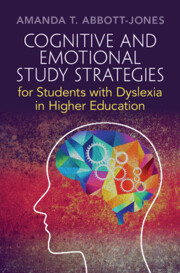Book contents
- Cognitive and Emotional Study Strategies for Students with Dyslexia in Higher Education
- Cognitive and Emotional Study Strategies for Students with Dyslexia in Higher Education
- Copyright page
- Dedication
- Contents
- Figures
- Preface
- Acknowledgements
- Preview of the Contents of the Book
- 1 Introductory Chapter: Dyslexia and Difficulties with Study Skills
- 2 Organisation Techniques and Meeting Deadlines
- 3 Note-Taking Strategies
- 4 Reading Strategies
- 5 Making Learning Memorable
- 6 Essay-Writing Strategies
- 7 Spelling Techniques
- 8 Revision and Examination Techniques
- 9 Presentation Techniques
- 10 Public Speaking, Interviews, Seminar Discussion and Debate Techniques
- 11 Emotional Coping Techniques and Looking After Your Wellbeing
- Epilogue
- References
- Index
- References
References
Published online by Cambridge University Press: 14 September 2023
- Cognitive and Emotional Study Strategies for Students with Dyslexia in Higher Education
- Cognitive and Emotional Study Strategies for Students with Dyslexia in Higher Education
- Copyright page
- Dedication
- Contents
- Figures
- Preface
- Acknowledgements
- Preview of the Contents of the Book
- 1 Introductory Chapter: Dyslexia and Difficulties with Study Skills
- 2 Organisation Techniques and Meeting Deadlines
- 3 Note-Taking Strategies
- 4 Reading Strategies
- 5 Making Learning Memorable
- 6 Essay-Writing Strategies
- 7 Spelling Techniques
- 8 Revision and Examination Techniques
- 9 Presentation Techniques
- 10 Public Speaking, Interviews, Seminar Discussion and Debate Techniques
- 11 Emotional Coping Techniques and Looking After Your Wellbeing
- Epilogue
- References
- Index
- References
Summary

- Type
- Chapter
- Information
- Cognitive and Emotional Study Strategies for Students with Dyslexia in Higher Education , pp. 427 - 436Publisher: Cambridge University PressPrint publication year: 2023



